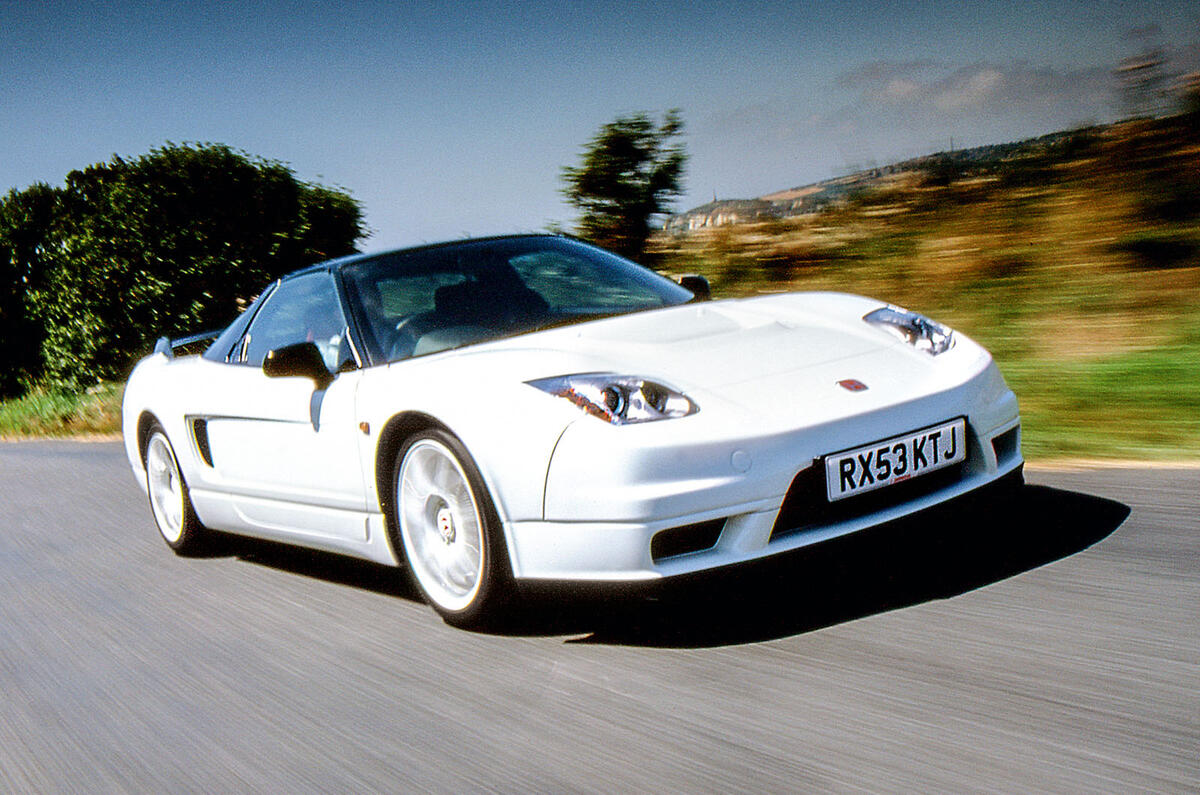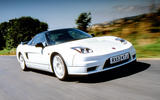When Honda brought production of the first-generation Honda NSX to an end in 2005, after 15 years, few could have guessed it would be a decade until we got to meet its successor. The Japanese supercar was universally loved for its sharp-edged looks, all-aluminium body and brilliant driving dynamics. Nevertheless, as a last hurrah, Honda launched a more hardcore, focused R version, and in 2004 we got our hands on it.
“Anyone who has ever played the game Gran Turismo, and I mean really played it by sifting for hours through the specification sheets of the car, balancing a rigid weight reduction scheme against extra torque, a lower ride height and a couple more degrees of camber for that extra bit of turn-in through the final bend at the Grand Valley, will appreciate this car more than most,” we wrote. “In isolation, the modifications are not huge, but as a whole, they amount to a completely different car.”
The NSX went on a diet for its R makeover, losing its air conditioning system, which reduced its already low kerb weight to 1270kg. The NSX-R was distinguished further from the standard car with a lighter flywheel and shorter throttle pedal travel to boost response. Bigger brakes were fitted, too.
The improvements went on: “Its suspension is stiffer and lower, and the body has been similarly modified with the addition of strut braces and the use of carbonfibre in vital areas. The final drive has been altered to improve acceleration. And the wheels are stiffer and lighter to reduce unsprung weight, the tyres having been developed to maximise the effects of the new suspension.” The power steering system was also removed to reduce weight and increase feel.
However, the most significant changes concerned the aerodynamics, “with its new Lamborghini Diablo GT-style carbonfibre bonnet nostril and a big rear diffuser/spoiler package”.
Our testers liked the look of the NSX-R. “Somehow it manages to look both incredibly delicate in its detailing and massively purposeful overall,” we said. “It also looks as if it would be horrendously expensive to repair should the unthinkable happen.”
At the time, though, we weren’t so impressed with the lack of central locking and electrical door mirror adjustment, removed in the name of weight saving, in a car costing £75,000.
So what difference did all the improvements make to the NSX-R? “Move away for the first time and two things become obvious: how much stiffer and more uncompromising the ride is compared with the regular NSX’s, and how much heavier the steering is,” we said. “Even at low speeds, the R feels like a much, much more serious piece of kit than the standard NSX. “At 6000rpm the beginning of the end of the world starts to happen.”
Our testers found, however, that the ride was the NSX-R’s Achilles' heel, as it was simply too firm for most UK roads. While the upside was more mechanical grip, it left us with a quandary: “Whether you could forgive the NSX-R’s dreadful ride in exchange for its mighty strengths, and for the fact that it’s clearly one of the great driver’s cars of our time, well, it’s a difficult one.” With luck, Honda won’t give us the same dilemma with the rumoured Type R version of the all-new NSX.









Join the debate
Add your comment
It isn't unexpected to happen
It isn't unexpected to happen the mistake in some cases in the mechanical gadgets. Hp is the outstanding brand that their gadgets are utilizing everywhere throughout the world and they encourage their clients with buy assignment online and every one of the administrations incorporates the after the deal.